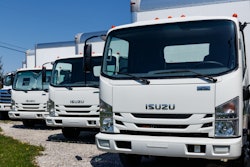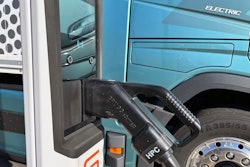Picture it: December 1935. The Douglas Aircraft company has rolled out the first DC-3 commercial passenger aircraft – a revolutionary, two-engine, all metal, low-wing aircraft that would soon dominate commercial aviation. Yet I suspect there were some industry people that said it was inadequate, that it didn’t have enough range, or carry enough weight, or that it was too costly.
They wanted a Boeing 747 and would have to wait for the invention of the jet engine and the evolution of infrastructure like concrete runways and a massive roll-out of a global airport network. Until then, they would just have to travel and move packages by much more capable steamships and steam trains.
In 1935, I suspect there were quite a few disbelievers that the Douglas DC-3, carrying 21 passengers cross country in 17 hours with three refuelings, would evolve in just 30 short years into the Boeing 747, capable of taking more than 350 people more than 6,000 miles at 600 mph in a single bounce.
Yes, the 747 is more expensive than the DC-3. Yes, it wasn’t available out of the box in 1935.
As of 2024, the majority of passenger 747s have ceased service as we move on to even more advanced aircraft. Will trucking see the same rapid innovation? In 25-years’ time, will we be able to look back at this moment and say, “Wow, I didn’t see that advancement coming."? I suspect we will. We’ve seen this in telecommunications, medical instrumentation and diagnosis, satellites, computers, television displays, and so many other technologies.
Let’s jump to the end of the book and hypothesize about what freight transportation might look like in the 2050s. The innovators have invented much better, higher energy density battery packs. The fledgling long distance truck hauling demonstrated in 2023 by Pepsi with the Tesla Semi going 1,076 miles in one day, facilitated by rapid 750 kW mid-route charging, is long since ancient history. In 2050, BEVs driven autonomously are regularly and safely clocking in 24/7 operations, exceeding 1,200 miles per day, and are exceeding the freight capacity of ancient diesels from 2024.
By 2050, molecular fuels have successfully found niche market success. Hydrogen is powering most North American railroads, well on its way to replacing the diesel-electric trains of old. This transition has occurred over a 20-year time span, which is a similar span to that seen when diesel-electric engines entirely replaced steam engines after 1945.
Green hydrogen is being produced in abundance near major rail terminals to fuel the new hydrogen fuel cell powered freight trains. Those hydrogen plants are large enough that some of the hydrogen is also powering drayage tractors in regional operations near rail yards. The synergy of hydrogen, railroads and drayage trucks is being touted as a major success for green energy advocates and molecular fuel producers alike.
Rural vehicle users, including farmers, have started to convert to zero-emission vocational vehicles. The industry and government have long since realized that electrifying sparsely populated rural regions to enable BEVs was just not be economically viable. Instead, microgrids — like solar and wind, combined with stationary battery packs and even green molecular fueled generators — were adequate, cost-effective solutions to empower zero-emission farm operations.
In 2050, low carbon fuel standard credits (LCFS) have gone the way of typewriters and film cameras. So little diesel and gasoline are being produced and demand has fallen so dramatically that LCFS credits are worthless. The refineries, pipelines and storage facilities for fossil fuels have been creatively repurposed to provide green molecular energy. All the early investment in carbon capture technology actually has paid off and the technology has matured to the point that it is economically viable and environmentally responsible to capture carbon from fossil fuel production and keep it from entering the atmosphere.
The experiments and prototypes of fusion reactors seen in 2024 have evolved into a couple operating fusion power facilities in North America. The electricity from these new sources, along with major investments over 25 years in solar, wind and traditional nuclear, have succeeded in tripling electricity production in North America. This growth in capacity also has been enhanced through major reductions in electrical demand through efficiency improvements in lighting, heating, and cooling of businesses and homes. Advancements in computers have allowed data centers to vastly reduce energy demands while increasing capabilities.
Artificial intelligence has become an archaic phrase in 2050. In 2050, the now ubiquitous technology is just built into anything and everything people do. It’s no longer even thought about; in the same way that social media became just part of everything by 2024. Fleet operators have AI built into brokerage services, which can identify the specific driver, truck, trailer and load for a particular run based on optimizing a wide range of parameters specific to each fleet. Even owner/operators are able to take advantage of these AI services that aim to profitably keep freight moving for everyone in the supply chain based on extensive data mining now possible across the industry.
Shippers instantaneously know where all their inventory is and where it needs to be. Freight haulers know exactly which load to pick up (as well as the next two or three after that) through predictive algorithms. Customers accurately know exactly when their freight will arrive.
Gone are supply chain challenges so endemic in the early 2020s. Data mining, AI software, and geospatial tracking sensors have eliminated freight bottlenecks. Supply of freight modes are carefully balanced with demand for freight movement in an integrated way between trucks, trains, ships and aircraft.
By 2050, accident rates have significantly decreased because of smarter, more capable cars and trucks. This has come with some loss of independence for drivers whose vehicles now automatically drive at the same speed as the traffic they are in. Speeding has been eliminated as an issue as cars and trucks automatically keep vehicles from exceeding the posted speed limit. Emergency vehicles have the capability to override this feature, as appropriate.
Massive investment in the electrical distribution grid has been combined with a growth in microgrids and on-site energy production and storage such that power is readily available wherever it is needed. Weather catastrophes and seasonal challenges are much better managed through the greatly improved National Grid 3.0, just as the federal highway system had done for transportation in the 1950s and ‘60s.
Today, BEVs are capable of many duty cycles being done by fossil fueled medium- and heavy-duty trucks.
The infrastructure for them is sufficient for this point in time to start rolling them into fleet use in many regions. The transition will happen over years, not overnight.
Fuel cell electric vehicles and other alternative new technologies are just starting out. Lower emission vehicles like renewable natural gas and renewable diesel fueled vehicles really have also just started improving.
They all will get better in time.
If you had waited for the DC-3 to become the 747, relying on steamships and steam trains to haul passengers, your company would have failed before the 747 became a reality.
Have some faith that innovation will occur and don’t fear getting your feet wet.













